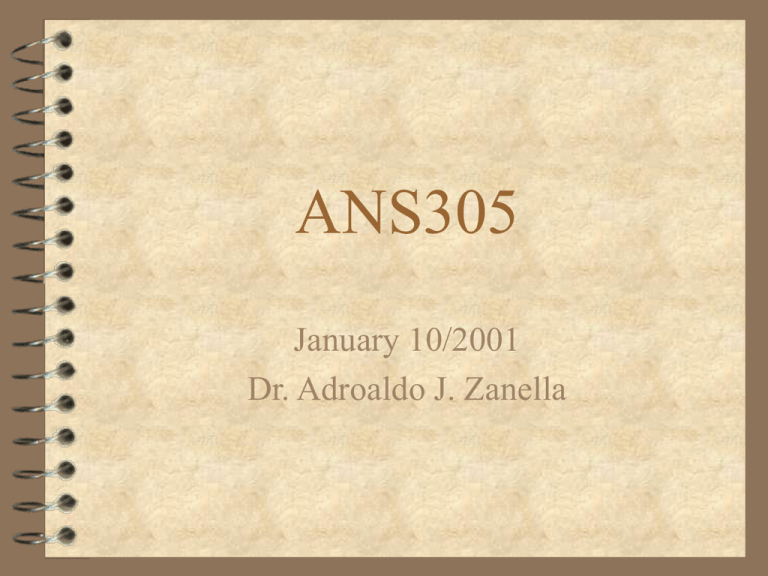presentation source
advertisement

ANS305 January 10/2001 Dr. Adroaldo J. Zanella Students attending MSU/Applied Animal Behavior Course 40 Females Males Total 35 30 25 20 15 10 5 0 1997 1998 1999 2000 2001 Enrollment 1997-2000 4% 23% 30% Sophmores Juniors Seniors Freshmen 43% Enrollment 1997-2001 70 70 Animal Science 60 Zoology 50 Prevet 40 Microbiology 30 20 10 0 Interior design 15 9 2 1 1 Students enrollment by majors (19972000) Agribusiness Management Physiology Veterinary technology Applied Animal Behavior Research in the UK and USA British Society for Animal Science/1998 22/227 papers (9.69%) American Society of Animal Science/1998 21/1482 papers (1.4%) 14 12 10 8 BSAS 6 ADSAASAS 4 2 0 Pigs Dairy cows Animal Welfare Research in the UK and USA British Society for Animal Science/1998 19/227 papers (8.3%) American Society of Animal Science/1998 13/1482 papers (0.8%) 16 14 12 10 BSAS 8 6 ADSAASAS 4 2 0 Pigs Dairy cows Recent developments in the USA McDonalds United Egg Producers Humane Society of the United States USDA-ARS welfare positions – Very good carrier opportunities Goal of the teaching program To develop the students ability to integrate their professional training with the growing need to assess the impact of current and new technologies on indicators of animal welfare. Syllabus Lectures are followed by demonstrations – A) Collection of behavioral data and analysis – B) Behavioral and physiological indicators of poor welfare – C) Welfare assessment: case studies • http://www.msu.edu/course/ans/305/ANS305.html Books: Required: – Animal Welfare (Applebly & Hughes) Additional readings (not required) • Stress and Animal Welfare (Broom & Johnson) • Measuring Behavior (Martin & Bateson) • Farm Animal Behaviour and Welfare (Fraser & Broom) Practical work (laboratory) Social Behavior Maternal investment Behavioral and physiological indicators of pain (lameness) Human animal interaction Learning Class projects – – – – 1997 1998 1999 2000 2001 Welfare indicators Maternal investment Human animal interactions Human animal interactions Procedures that cause pain and distress Evaluation Weekly lab. reports • • • • Objectives Critical evaluation Papers Seminars January 26,12:15; March 22, 7:00 PM April 20, 12:15 PM KBS lab. participation and report Class discussion and presentation Evaluation Mid-term exam – Behavioral techniques Final exam Quiz 1 and 2 Project – Project proposal (individual) – Paper (individual) – Poster (group) – Oral presentation (group)









